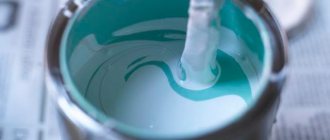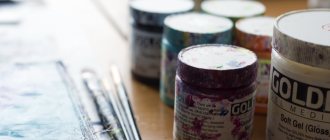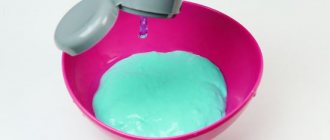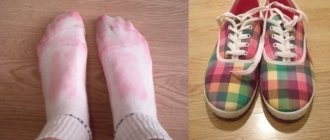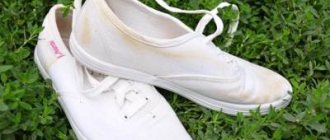Why does gouache dry out?
The composition of gouache includes water, coloring pigments, and an adhesive base. The paint is suitable for painting on different surfaces - paper, glass, plywood, fabric, etc. There are three main reasons for drying out:
- expiration date of paints (initially displayed on the packaging, after opening the container it is significantly reduced);
- a loose lid (a common reason why the composition has to be restored using additional means);
- low quality products.
To reduce the likelihood of paint drying, it is important to follow several rules for handling paints, and do not leave jars open or with the lids not tightly screwed on.
Gouache
Gouache dries out quite often. And often this comes as a surprise, because even if you use gouache every week, it can become cracked and lose its plasticity.
Why does this happen and how to restore dried gouache?
Remember: when working with gouache, you cannot use hot or even warm water! This dries it out significantly and contributes to the formation of mold in the jars.
If the gouache has dried and its surface is covered with cracks, you need to add a teaspoon of boiling water, close the lid tightly and leave the paint overnight.
The next day it will be like new. To restore plasticity, you can add a drop of PVA glue along with boiling water. But just boiling water will be enough.
Oil
In oil paints the binder is linseed oil. It is thanks to this component that paints harden to a stone state, after which they cannot be used.
This is why I recommend not squeezing a large amount of paint out of the tube.
Because then all the unused paint turns into solid masses that cannot be used in the future. And, by the way, they can only be cleaned with a hairdryer. But usually they just buy a new palette so as not to bother with dried material.
Cleaning dried oil is quite difficult.
If the paint has dried right in the tube, it cannot be used either. Although oil in tubes can be stored for many years, there is still a chance of hardening.
- For example, if the tube is not closed tightly.
- Or if there are cracks on the surface of the package, air also penetrates inside the package, causing the oil to harden.
How to restore dried oil paints?
Unfortunately, there can only be one piece of advice here: buy new tubes.
How to mix gouache correctly
It is best to mix or dilute gouache on a special palette. If it is not there, then an ordinary plate can be an alternative. The paint is very easy to clean.
When starting your work, first of all, mix the paint well in a jar, and only then transfer a small amount of it to the palette, and then mix it with water or other paint, obtaining the desired shade.
Gouache is diluted to the consistency of liquid sour cream, but you need to know when to stop – the paint should not become translucent, it should remain fairly dense. Liquidly applied gouache will leave dark edges when it dries. If the paint is applied too thickly, in several layers, it will not adhere well and will crumble like plaster.
Prevention
It is best not to let the cap dry out. Artists have been using one trick for many years to prevent such difficulties. It's time for me to reveal this secret weapon... Vaseline!
Before screwing on the lid, wipe the inside of the lid to remove any remaining paint. Then, simply rub Vaseline (or any other Vaseline product) onto its threads.
This is a real lifesaver and a very good habit to develop. Glycerin, a drop of olive or any other cooking oil will also cope with this task.
Posted by Marion Boddy-Evans
What to do if the gouache has dried out
Sometimes, when a jar of paint is not tightly closed, the gouache can dry out. You can put it into working condition in this way:
- pour a little water (it should cover the paint a little);
- close the lid tightly and leave the jar in this state for a day;
- if the next day the paint remains thick, you can add a little more water and leave the jar for the second day.
If, thinking about what to do if the gouache has dried out, you decide to use this dilution method, remember: excess water will make the paint layer thin and translucent. After drying, the paint layer will become dirty and crack.
Thus, even the hardest paint can be restored more than once. You need to understand that for professional artists working on works of art, reclaimed paint is not suitable. This option is best used for children's creativity.
Watercolor
Finally some good news: watercolor can be restored. Watercolor is 80% pigment and the remaining 20% is binder and glue.
If you used watercolor in tubes and it dried out, then simply cut the packaging and use the paint as regular watercolor in pans. But its plastic properties will be slightly worse.
So, if you want to completely restore plasticity, you need gum arabic for this.
Gum arabic is a binder in watercolors that dissolves easily in water and provides plasticity.
Take an empty jar (you can use one that has run out of gouache), stir the watercolor with water and a small amount of gum arabic. This way you will get the original consistency.
Remember to close the lid tightly to avoid drying out again.
Watercolor is also sold in cuvettes, where it is always in its usual solid state.
This form is more convenient to use, as it does not require restoration.
Want to learn more about watercolor techniques and painting techniques? I advise you to read this article.
All ways to dilute if it's dry
Before “reanimating” the paint, you must carefully inspect the container. There should be no external damage or cracks, due to which the gouache could quickly deteriorate again.
If the pigment has only thickened a little, you can try placing the container in a warm place - on a sunny windowsill or near a radiator, and wait a few hours.
Using water
Gouache is a water-based dye. Plain water allows you to quickly dissolve the pigment without ruining it. How to make paint workable:
- inspect the container;
- pour water - the liquid level should slightly cover the dried pigment;
- close the lid tightly and leave for 24 hours at a temperature not below zero;
- If after the prescribed time the paint remains a little dry, the procedure must be repeated.
Water is used most often. This is an affordable, economical and environmentally friendly solvent that will not harm the pigment and will maintain brightness and other properties.
Attention! It is important not to pour too much liquid. If you overdo it, the layer will become light, transparent, and after drying it will begin to crack even on paper.
Water bath
An additional recovery method is a water bath. First, you should prepare a metal double boiler (combine two metal containers that differ in diameter), boiling water, and toothpicks. Instructions:
- Boiling water is poured into the jar, slightly above the level of the dried pigment;
- the container is placed in a saucepan of a smaller diameter, the second one of a larger diameter, filled with water, and the structure is placed on the fire (if the lids are placed in liquid, the old layer will come off);
- bring the water to a boil, reduce the heat to low - the liquid should bubble a little;
- cover the structure with a lid;
- water is added when necessary;
- After some time, use a toothpick to check the degree of dissolution of the liquid in the paint.
If the pigment is not too dry, you can make liquid paint in 20 minutes. If the composition can be tapped, it will take at least an hour. The main indicator is stirring with a toothpick until smooth.
Acrylic and tempera
I am often asked: how to restore dried acrylic paint for painting?
Acrylic and tempera are water-soluble paints. But, despite this, they also cannot be returned to their original state. The fact is that they contain an emulsion, which, when dried, turns the paint insoluble.
So, if the acrylic paint has dried out, you need to go to the store for a new one.
Second wind
When a muse comes to an artist, he is completely immersed in the creative process. And it happens that after finishing the work there is no energy or time left to wash the brushes and palette, close the tubes and put the work place in order.
All creative people are familiar with this situation, and sometimes art materials suffer because of it.
Paints are most affected. But if you left the jar open or for some other reason they dried out, this is not a reason to despair.
Waterborne paints can last a long time as they can be restored to their original state. But oil, acrylic and tempera paints cannot be restored. Why? The fact is that the ability to restore paint depends on the binder included in the composition.
Let's look at each material separately to understand what you can do when it dries.
Difficulties in working with gouache
The main difficulty that artists working with gouache face is that when it dries, it changes its color, becoming lighter or, conversely, darker. It must be remembered that yellowish and orange hansa darken after drying, while chromium oxide, emerald green, golden and light ocher, as well as cadmium and cobalt, tend to lighten.
Ultramarine, burnt/natural sienna, as well as specks can make even an experienced craftsman nervous: the fact is that they first darken and then lighten. The problem of lightening and darkening can be solved using zinc or silver white. They are usually included in the range of paints offered.
In order not to make a mistake with the tone, which is quite easy if the gouache has dried, novice artists are recommended to apply paint first. However, this will also not harm experienced craftsmen and will definitely make their work easier.
What to do with dried gouache (using a water bath)
There is a second way to dilute gouache - a water bath. You need to prepare a metal steamer (it can be replaced with two containers of different diameters), toothpicks and boiling water. Step-by-step instructions for softening gouache look like this:
- into a jar with dried gouache you need to pour just boiled water, which will completely cover the paint;
- jars of paint are placed in a pan with a smaller diameter. Next, a larger diameter pan is filled halfway with water; a second pan with paints must be placed inside;
- the caps can also be placed in water so that the paint comes off from them;
- bring the water in the container to a boil and reduce the heat so that the liquid bubbles slightly;
- cover the container with a lid;
- the liquid will boil away, so hot water must be added as needed;
- Toothpicks are needed to check how much the paint has softened.
For paint that is not too dry, it will take no more than 20 minutes. If you don’t know what to do, if the gouache has dried to the point of knocking, then just simmer the jars for at least an hour, everything will work out. You need to wait until the gouache is stirred until smooth.
Knowing what to do when paint (gouache) has dried, you can save on buying new materials for creativity. During the dilution process, the paint acquires a liquid consistency and becomes usable again. You just need to remember to protect your hands and clothes, since gouache is difficult to wash off.
Gouache is a popular paint among painting enthusiasts; it has no strong odor, dries quickly and looks great in several layers. What to do if the gouache has dried out? Throw it away and buy a new one? You shouldn’t throw away jars of gouache, even if hard lumps have formed in them; the paints can be given a second life.
Techniques for using gouache
Drawing with gouache (taken from https://www.youtube.com/embed/YpjKRk7NUXM?__ref=vk.api)
In order to get the desired result when painting with gouache and not get upset, I recommend following simple rules:
Do not mix paint inside the jar
There is such a thing as a “palette”, this is some kind of base on which paints are mixed. The palette can be a purchased plastic palette, a piece of white cardboard, a white plate, sour cream caps, as I showed in the last article. Palettes are convenient not only for mixing, but also for diluting gouache to a liquid watercolor-like state.
You need to handle white gouache especially carefully, because... getting even a very small amount of a different color into a jar of white gouache will ruin the paint forever. It acquires a tint and can only be used to add colors similar to those that stained it to lighten them, giving them a “pastel” look.
Close paint cans tightly
Gouache dries easily not only in the drawing, but also in the container where it is stored. If the gouache has dried out, then see the techniques for “reanimating” it below.
Stir the paint before use
In its normal state, gouache should be similar in consistency to oil paints, i.e. creamy. If necessary, bring the taken part on the palette to a more liquid state.
Do not mix different colors in the liquid state in the drawing
It is better to work in a drawing either with pure colors, or mixed on the palette, or overlapping an already dried layer, otherwise there is a high probability of getting “dirt”.
Draw from dark to light
Gouache is not transparent and a new stroke covers the previous one well, so you need to write from dark to light tones, and not vice versa. That is, you need to start with darker paint tones, and place highlights and dark color accents at the end of the work. (In watercolor, we basically do the opposite.)
Caution - black!
You cannot add black color to the shadow image - it will turn out dirty. For shadows, it is better to take a color from the opposite sector of the color wheel from the color of the object. This color is added in the required quantity to the main tone. Most often, blue, green or purple are used to depict shadows.
You also cannot use black to obtain a darker tone of the same color for the same reason - you will get dirt.
Once dry, the gouache turns pale
Wet gouache is brighter; when it dries, it fades due to the presence of chalk in it. Therefore, you should always choose colors that are more saturated than those that you want to see in the end.
Gouache paints
Gouache is a dense and opaque paint. Once dry, it will be matte and velvety. It is perfect for paper, canvas, cardboard or smooth wood surfaces.
Unlike watercolors, gouache paints have less binder, but much more pigments. Due to this, you can cover up unsuccessful areas, and you will be able to paint over even dark spots with lighter paint. The previous layers will not show through, the drawings will come out beautiful, bright and, most importantly, neat.
Store gouache in tightly closed containers at room temperature. It must be protected from cooling below zero. If it so happens that for some reason the paints (gouache) have dried out, what to do with them will be described below in the article.
